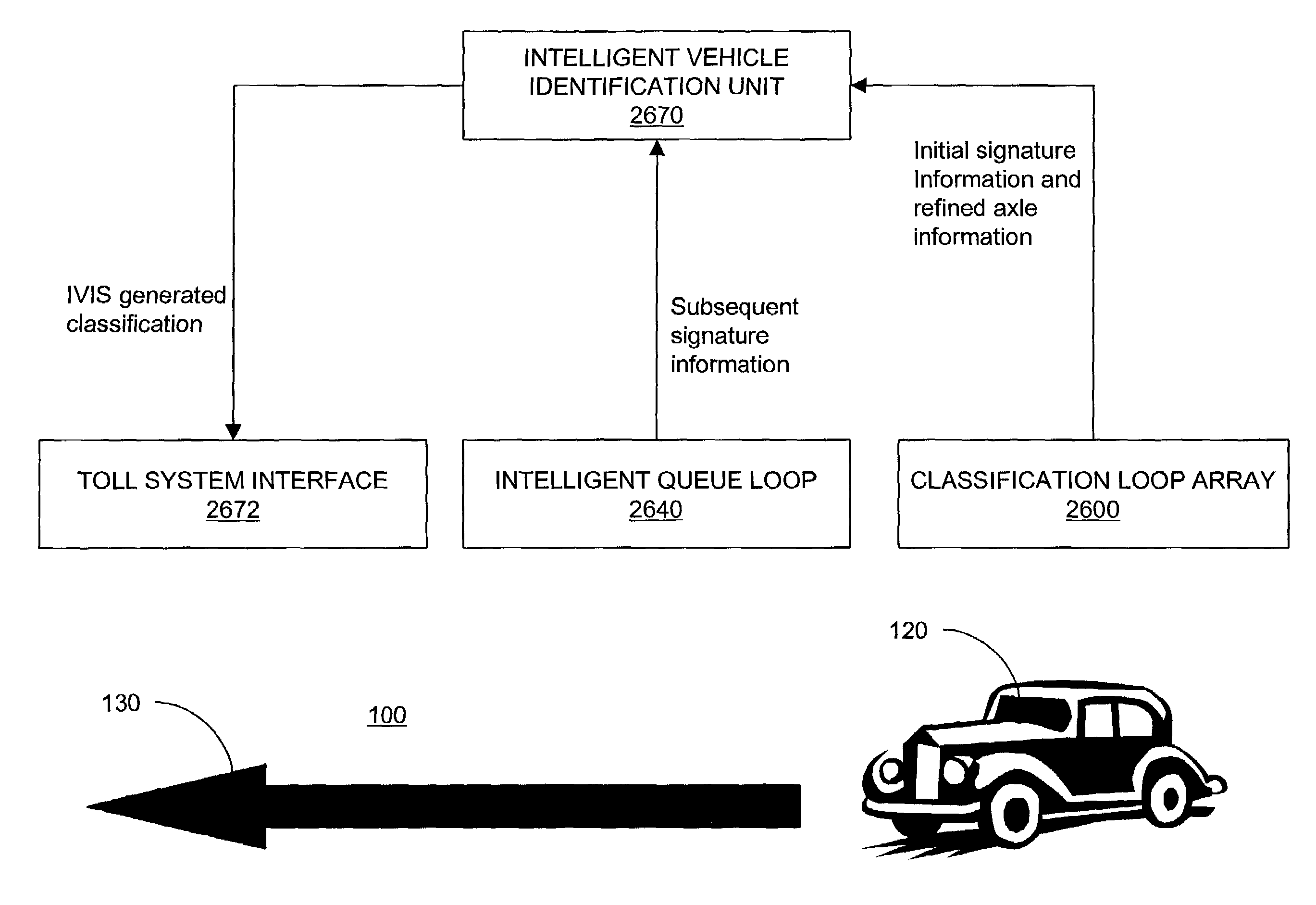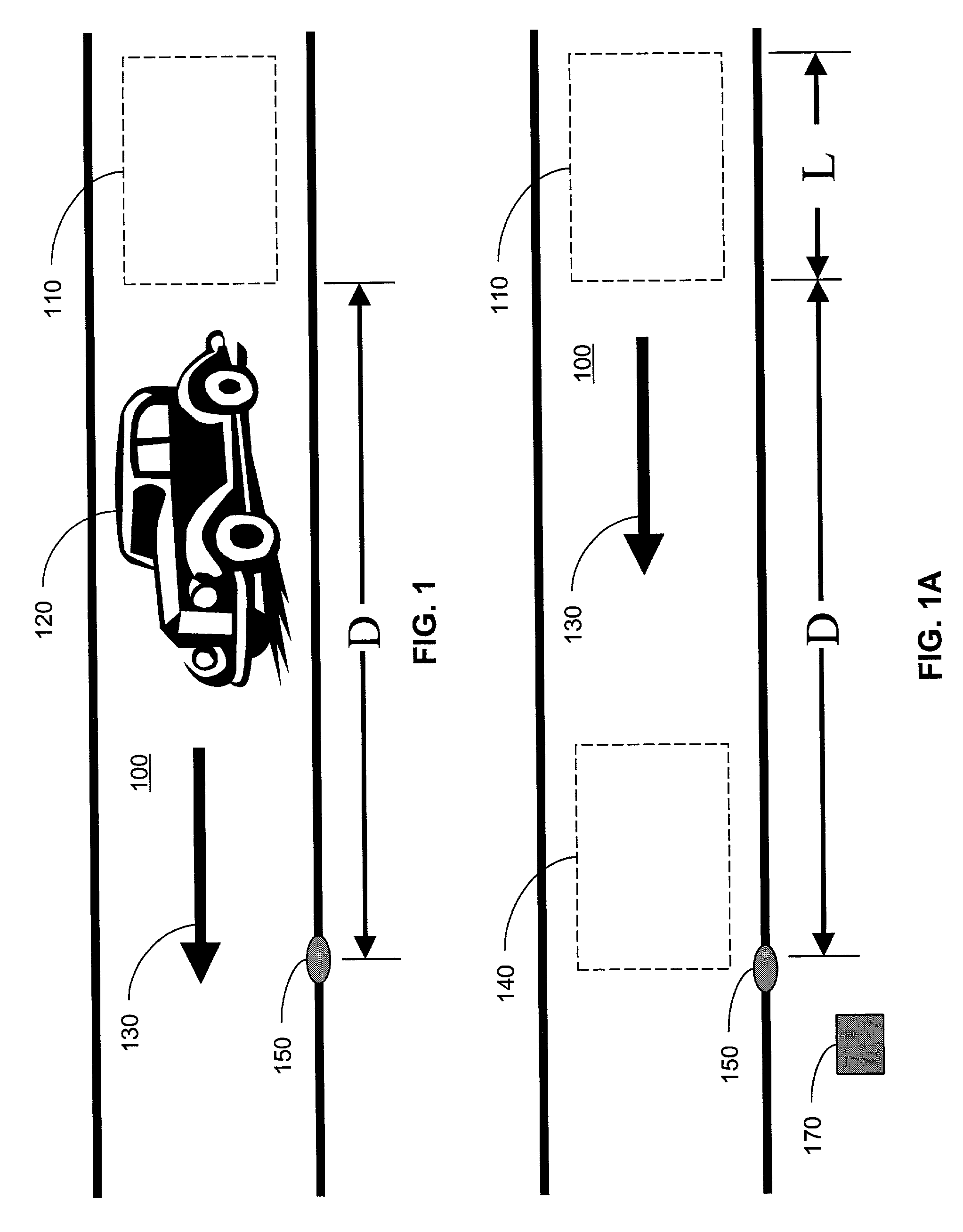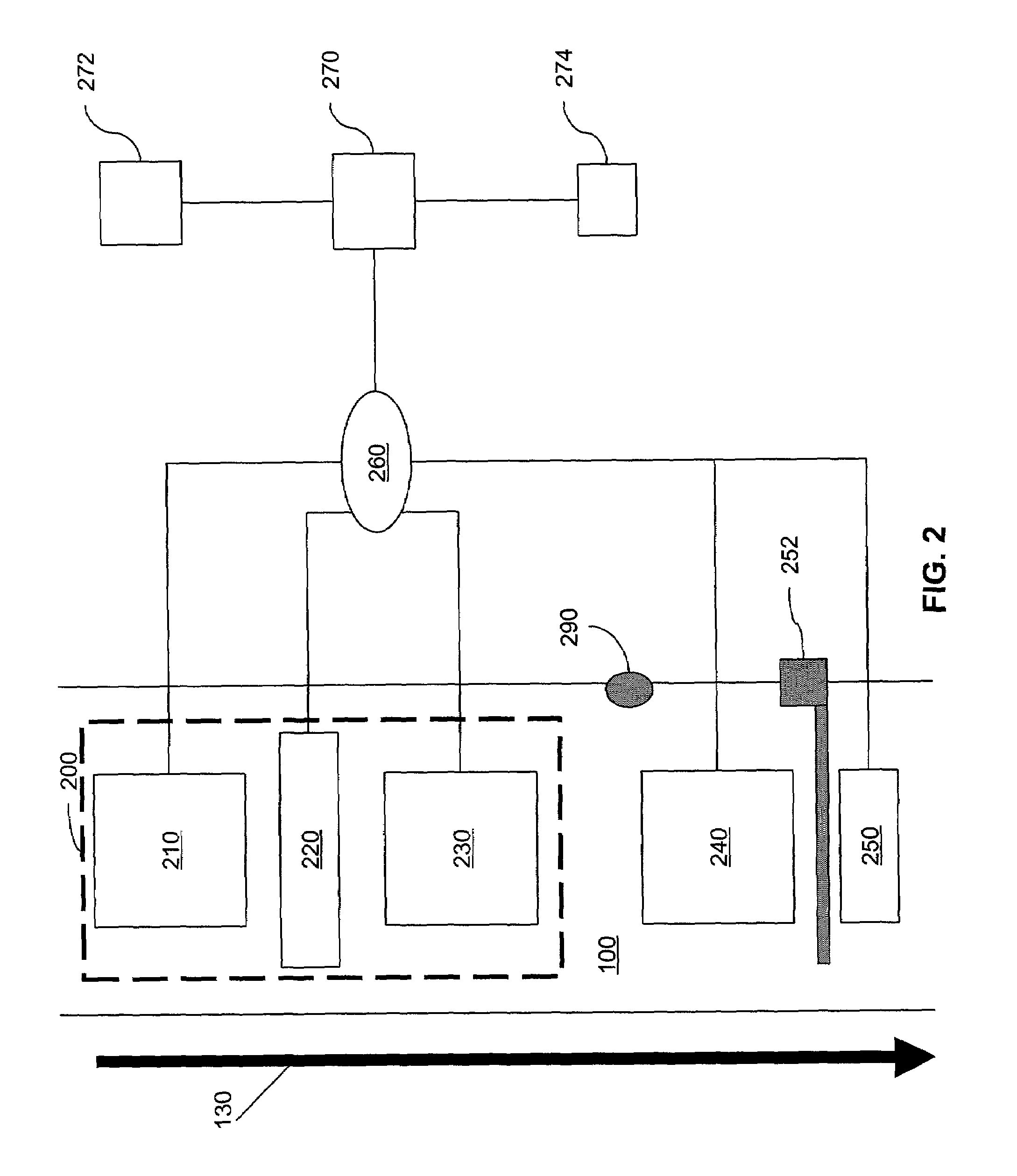Intelligent vehicle identification system
a vehicle identification and intelligent technology, applied in the field of identification of vehicles, can solve the problems of not addressing the potential for errors in the presence of attendants, the inability to properly classify all transactions, and the use of attendants to collect fares, etc., to achieve the effect of reducing the work required by toll attendants, reducing the work required, and much faster
- Summary
- Abstract
- Description
- Claims
- Application Information
AI Technical Summary
Benefits of technology
Problems solved by technology
Method used
Image
Examples
Embodiment Construction
[0041]Overview of the Invention
[0042]It is noted the present invention can be adapted for a large number of different applications. For example, the profile information generated by a classification loop array using the present invention can be used in traffic management and analysis, traffic law enforcement, and toll collection.
[0043]FIG. 1 is a schematic diagram illustrating a preferred location of classification loop array 110 of the present invention on the surface of path 100. Path 100 can be, for example, a toll lane, a roadway, an entrance to a parking lot, or any stretch of surface on which vehicle 120 travels in direction 130. Classification loop array 110 is located at a distance D upstream from device 150 along path 100.
[0044]Classification loop array 110 comprises at least one signature loop and at least one wheel assembly loop. Briefly, the signature loop is adapted to indicate changes in electromagnetic field which can be processed to produce initial signature informat...
PUM
 Login to View More
Login to View More Abstract
Description
Claims
Application Information
 Login to View More
Login to View More - R&D
- Intellectual Property
- Life Sciences
- Materials
- Tech Scout
- Unparalleled Data Quality
- Higher Quality Content
- 60% Fewer Hallucinations
Browse by: Latest US Patents, China's latest patents, Technical Efficacy Thesaurus, Application Domain, Technology Topic, Popular Technical Reports.
© 2025 PatSnap. All rights reserved.Legal|Privacy policy|Modern Slavery Act Transparency Statement|Sitemap|About US| Contact US: help@patsnap.com



